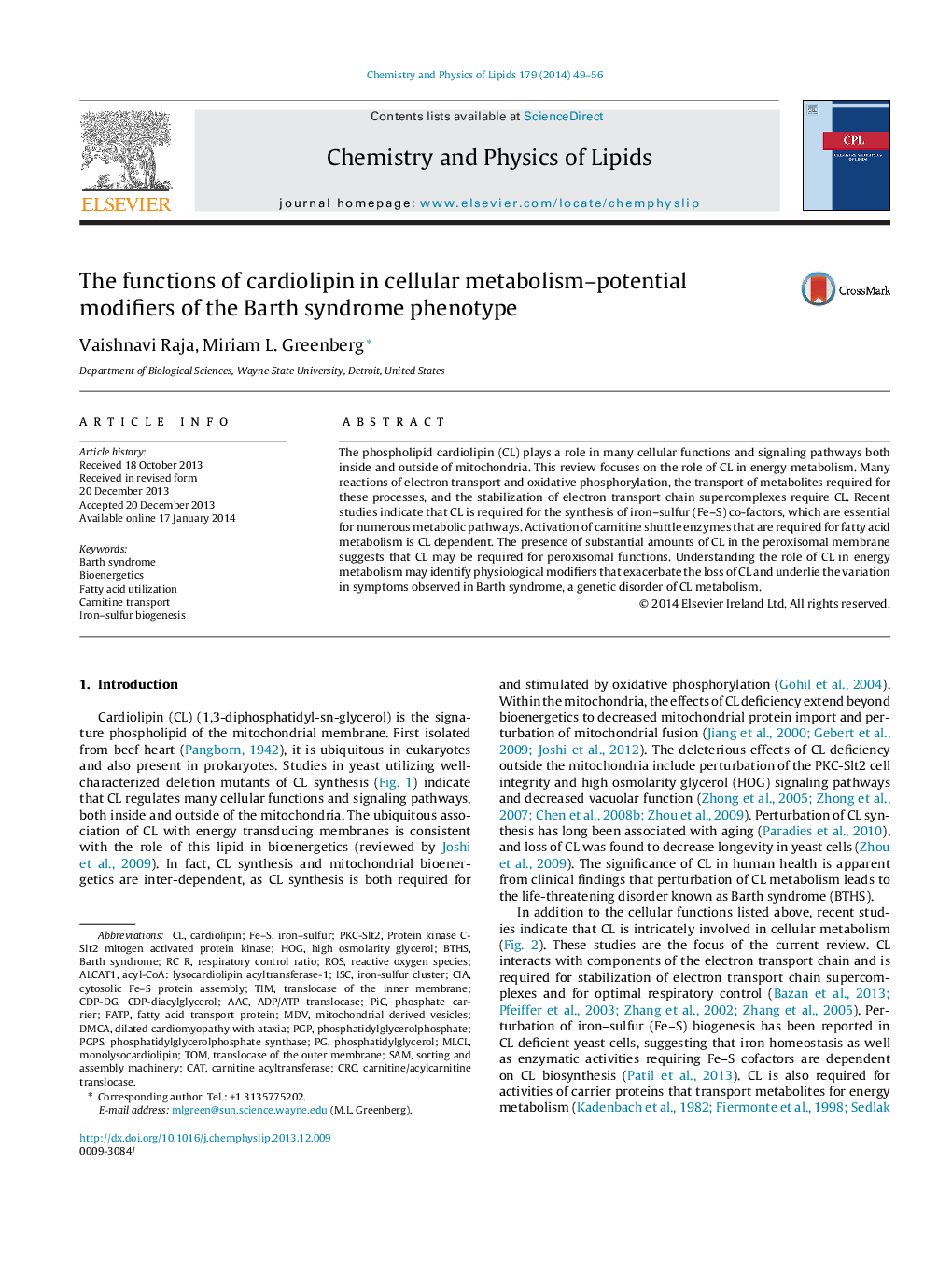| Article ID | Journal | Published Year | Pages | File Type |
|---|---|---|---|---|
| 1253349 | Chemistry and Physics of Lipids | 2014 | 8 Pages |
•Barth syndrome, a disorder of cardiolipin (CL) remodeling caused by mutations in tafazzin, is characterized by a wide range of phenotypes.•Loss of CL-dependent functions may exacerbate phenotypes associated with tafazzin deficiency.•The requirement for CL in metabolism is reflected in its role in mitochondrial bioenergetics, transporter activity, and iron-sulfur biogenesis.•The presence of CL in peroxisomes suggests that it may also be required for peroxisomal function and the carnitine shuttle.•Perturbation of these metabolic functions may exacerbate the loss of tafazzin and other conditions of CL deficiency.
The phospholipid cardiolipin (CL) plays a role in many cellular functions and signaling pathways both inside and outside of mitochondria. This review focuses on the role of CL in energy metabolism. Many reactions of electron transport and oxidative phosphorylation, the transport of metabolites required for these processes, and the stabilization of electron transport chain supercomplexes require CL. Recent studies indicate that CL is required for the synthesis of iron–sulfur (Fe–S) co-factors, which are essential for numerous metabolic pathways. Activation of carnitine shuttle enzymes that are required for fatty acid metabolism is CL dependent. The presence of substantial amounts of CL in the peroxisomal membrane suggests that CL may be required for peroxisomal functions. Understanding the role of CL in energy metabolism may identify physiological modifiers that exacerbate the loss of CL and underlie the variation in symptoms observed in Barth syndrome, a genetic disorder of CL metabolism.
